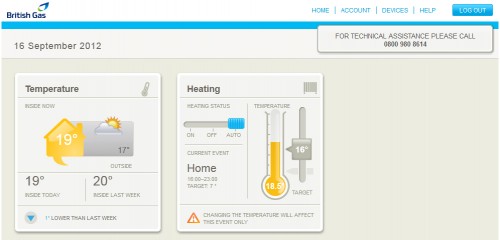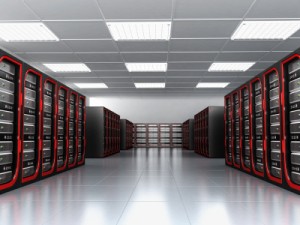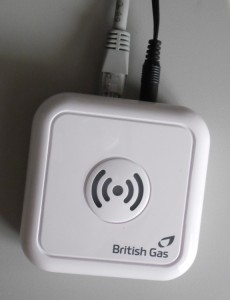This is the third in a series of articles in which I am exploring Remote Heating Control – a technology of the future. Learn more about this series by reading the introductory article, called stepping into the future of smarter living.
So far in the series, I have introduced Remote Heating Control technology, its capabilities and potential, and discussed the installation process, with specific reference to my installation. In this article I will be sharing with you my experiences and first impressions of using the technology.
Logging In For The First Time
Remote Heating Control really is a technology of the future. Why? How many parts of your home can you currently control via the internet? Probably non. In the future I believe that most of our home will be remotely controllable. Technologies like smart meters and Safe and Secure are all linked to the internet, meaning that you can secure your home or see what electricity you are using remotely. These are two new technologies which will also be making their way into our homes very soon, and are part of the future of smarter living.
So Remote Heating Control is a technology of the future, as you can now control your heating online.
To login to my heating (I know, at first it sounds a little odd and at the same time cool ‘logging in to your heating‘!) I have to go to this URL: https://myhome.britishgas.co.uk
This URL is British Gas’s myHome homepage, which is the portal that I will log into to change/check my heating. It is also the portal you would visit if you have Safe and Secure technology installed at home.
Basically, myHome could soon be where you go to control your homes heating and security.

myHome – where I now go to check and change the temperature of my house
I was given a handy User Guide by Nick (the British Gas engineer who installed my technology) which has been very helpful, as it contains practically everything I need to know about remotely controlling my heating. That said, as I am relatively technical and have found that as the interface is so easy to get to grips with, I have rarely had to refer to the User Guide.
After logging in for the first time, like I explained in my previous post, I had to get the devices to find each other. This is usually all done online, so you don’t need to actually change the device setup at all, the portal just connects to your devices and then synchronises them.
In my case it had been a while since my installation before I got round to setting up my online account. This meant that my smart linked thermostat had fallen out of pairing mode, so the hub was unable to find it. British Gas were more than helpful in getting me up and running, and I was given a personal contact (engineer Steve Plumb) who helped me get my system working. Being a techie, I took the initiative to see if I could get the smart linked thermostat homing again myself, by taking the batteries out, and then putting them back in again – hence restarting the device. It worked. I have no doubt that the phone call I had scheduled with Steve would have helped me solve the issue just as fast, but it felt good to solve it myself.
Tutorial
After all my devices were connected, I was presented with a four step tutorial, which explained how to use the technology.
The first step was a quick guide to the SMS control function. It let me know the commands I would need to control my heating when not in the house, or near an internet connection.
The next step gave me a link to download the app (iPhone and Android) that I can use to control my heating via smartphone.
Step three explained the homepage of the console, what everything meant and how I control my heating instantly – i.e. if I decide to make my house hotter/colder than my scheduled plan.
The final step gave me an explanation of how to set up a heating schedule.
Homepage
When I login to myHome, I am now presented with a very interesting screen, which is filled with data and options. At the top of the screen are some navigation links, and then taking centre stage are two main boxes: temperature and heating.

myHome homepage – where I control my Remote Heating Control from
The temperature box lets me know the temperature inside my house at the moment (rounded to the nearest degree) along with the weather and temperature outside too. It also shows me the average temperature in my home today, and this week.
If you look at the image above you will see that my home must be pretty well insulated, as I am yet to have the heating on, and despite it being 17°C outside, inside it is a comfortable 19°C. The average temperature for my house today is 19°C, and in the last week it has been 20°C.
The heating box tells me the exact temperature inside my house right now to one decimal place – the same reading on my smart linked thermometer (18.5°C).
If I click on the temperature box it takes me to a page where I can view diagrams of what the temperature in my house was like over the last day, week and month. Very interesting and handy when setting a schedule
If I click on the heating box I am taken to a page where I can set up a day by day heating schedule. The weather seems to be pretty mild (at least where I live) at the moment, so I haven’t yet set up a heating schedule, as I don’t really need my heating on, so more on this next time.
Overall I am very pleased and impressed with my new online heating portal myHome. It is very well designed, is easy on the eye, and makes me heating seem a lot easier to control. I look forward to using the technology in the next week or so as the weather gets colder.
Next Time
In the fourth post in this series (launching on Friday the 5th of October) I will be exploring how remote the technology really is. I will discuss how to set up a schedule, and how easy or difficult I find that, along with how effective my remote commands are at affecting the temperature of my house, whether programmed via text, app, online or smart linked thermostat.





